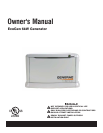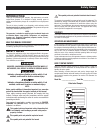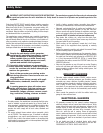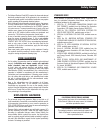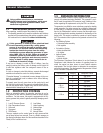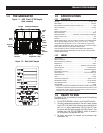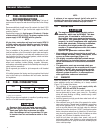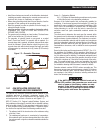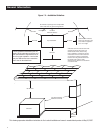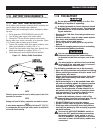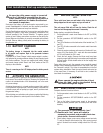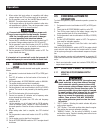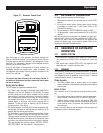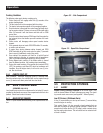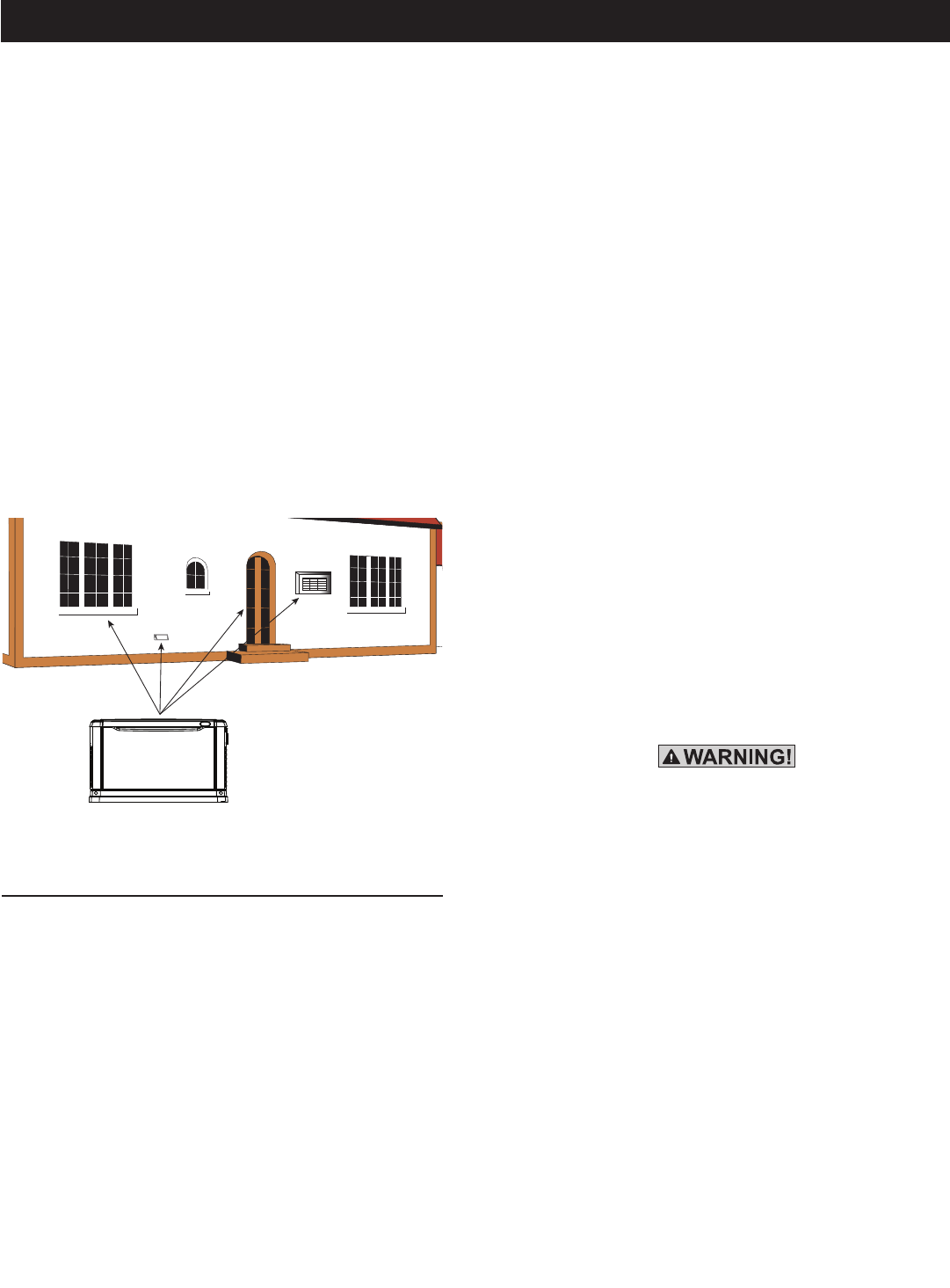
7
Install the unit where services will not be affected or obstructed, •
including concealed, underground or covered services such as
electrical, fuel, phone, air conditioning or irrigation.
Where strong prevailing winds blow from one direction, face the •
generator air inlet openings to the prevailing winds.
Install the generator as close as possible to the fuel supply, to •
reduce the length of piping.
Install the generator as close as possible to the transfer switch. •
REMEMBER THAT LAWS OR CODES MAY REGULATE THE
DISTANCE AND LOCATION.
The genset must be installed on a level surface. The base frame •
must be level within two (2) inches all around.
The generator is typically placed on pea gravel or crushed •
stone. Check local codes if a concrete slab is required. If a
concrete base slab is required, all federal, state and local codes
should be followed. Special attention should be given to the
concrete base slab which should exceed the length and width
of the generator by a minimum of six (6) inches (0.152 meters)
on all sides.
Figure 1.3 – Generator Clearances
1.9.2 NEW INSTALLATION GUIDELINES FOR
STATIONARY AIR-COOLED GENERATORS
The National Fire Protection Association has a standard for the
installation and use of stationary combustion engines. That
standard is NFPA 37 and its requirements limit the spacing of an
enclosed generator set from a structure or wall (Figure 1.4).
NFPA 37, Section 4.1.4, Engines Located Outdoors. Engines, and
their weatherproof housings if provided, that are installed outdoors
shall be located at least 5 ft. from openings in walls and at least 5
ft. from structures having combustible walls. A minimum separa-
tion shall not be required where the following conditions exist:
1. The adjacent wall of the structure has a fire resistance rating
of at least 1 hour.
2. The weatherproof enclosure is constructed of noncombus-
tible materials and it has been demonstrated that a fire within
the enclosure will not ignite combustible materials outside the
enclosure.
Annex A — Explanatory Material
A4.1.4 (2) Means of demonstrating compliance are by means
of full scale fire test or by calculation procedures.
Because of the limited spaces that are frequently available for
installation, it has become apparent that exception (2) would be
beneficial for many residential and commercial installations. With
that in mind, the manufacturer contracted with an independent
testing laboratory to run full scale fire tests to assure that the
enclosure would not ignite combustible materials outside the
enclosure.
The criteria was to determine the worst case fire scenario within
the generator and to determine the ignitability of items outside the
engine enclosure at various distances. The enclosure is construct-
ed of non-combustible materials and the results and conclusions
from the independent testing lab indicated that any fire within the
generator enclosure would not pose any ignition risk to nearby
combustibles or structures, with or without fire service personnel
response.
Based on this testing and the requirements of NFPA 37, Sec 4.1.4,
the guidelines for installation of the generators listed above are
changed to 18 inches (457mm) from the back side of the genera-
tor to a stationary wall or building. For adequate maintenance and
airflow clearance, the area above the generator should be at least
4 feet with a minimum of 3 feet at the front and ends of the enclo-
sure. This would include trees, shrubs and vegetation that could
obstruct airflow. See the diagram on the reverse of this page and
the installation drawing within the owner’s manual for details.
Generator exhaust contains DEADLY carbon monoxide gas. This
dangerous gas can cause unconsciousness or death. Do not place
the unit near windows, doors, fresh air intakes (furnaces, etc.) or
any openings in the building or structure, including windows and
doors of an attached garage.
If the AUTO/OFF/MANUAL switch is not set to
its OFF position, the generator can crank and
start as soon as the battery cables are con-
nected. If the battery charger power supply
is not turned off, sparking can occur at the
battery posts and cause an explosion.
General Information



